
Royal Enfield Himalayan Fi - Road Test Review
- Jan 19, 2018
- Views : 50049

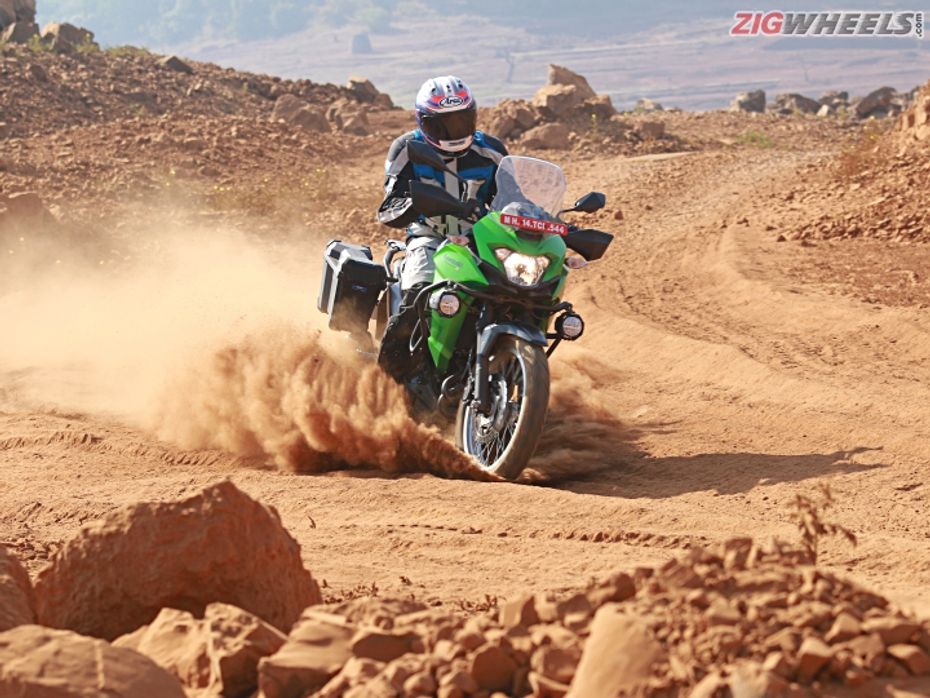
ADVs are the flavour of the season, at least amongst the biking elite in the country. Every seasoned rider knows the value and logic behind owning an ADV in India, enough for them to look past the street nakeds and even sports tourers. And the number of riders who want to get themselves an adventure bike is steadily growing. So it’s a given that manufacturers want a piece of this pie. If you have the moolah, you have your Tigers and Multistradas. If not, there is the Himalayan. But there hasn’t really been anything in between those spaces… until now, that is.

Kawasaki’s Versys X 300 aims to bridge that gap to a certain extent. It uses the same motor and a modified version of the frame from the Ninja 300, all wrapped in purposeful-looking bodywork with new suspension and wheels. It looks all good until you hear the price. At Rs 4.69 lakh (ex-showroom), it costs Rs 90,000 more than the Ninja 300. In fact, add 30,000 more and you could go for the larger Kawasaki Z650. At least that's what Indian logic dictates. The question then is - is the Versys X300 genuine value or just an overpriced ADV?
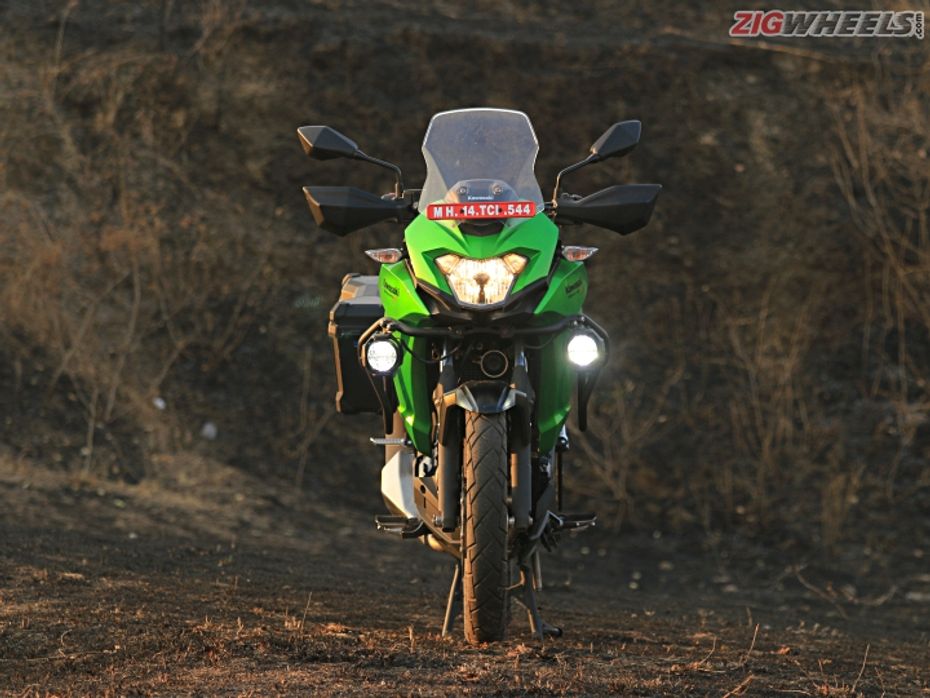
Intent:
ADVs can never be termed as good-looking motorcycles. They are built to a purpose, which is to be the Swiss Army Knife equivalent of motorcycles. Given that, the Versys X is in no way pretty. What it lacks in looks, it makes up in mass. In the flesh, it looks larger and more intimidating than the Ninja 300 it is based on. The front bodywork is dominated by a large, nearly vertical windscreen, knuckle guards and two LED fog lamps mounted on a large crash bar that wraps around the front of the bike. At 1390mm, this is a tall bike. In comparison, the Ninja 300 is 1170mm tall. In fact the Versys X is just 10mm shorter than the larger Versys 650! The Versys X is also 155mm longer and 225mm wider than the Ninja 300. More interestingly, it is 5mm longer and 100mm wider than the Versys 650! So, for that extra price, you do get a larger motorcycle.

Apart from the bodywork, the Versys X gets larger and more comfortable seats. Despite the slightly taller 815mm seat height, we were able to place both feet on the ground while astride. The updated suspension with longer travel and larger wheels improve ground clearance to 180mm (10mm more than the Versys 650). While you do pay a premium on the Versys X, you get a set of LED auxiliary lights, front crash guard, knuckle guards, a single hard pannier and rear luggage rack as standard. The pannier on the test bike uses the same key as the ignition as well. The India-spec version gets just one pannier instead of the two on both sides on the international version. In place of the second pannier you get a large saree guard that is big enough to serve as barbecue rack. One thing the Versys X could have come with is a sump guard - a miss considering they are billing this bike as an off road-focused ADV.
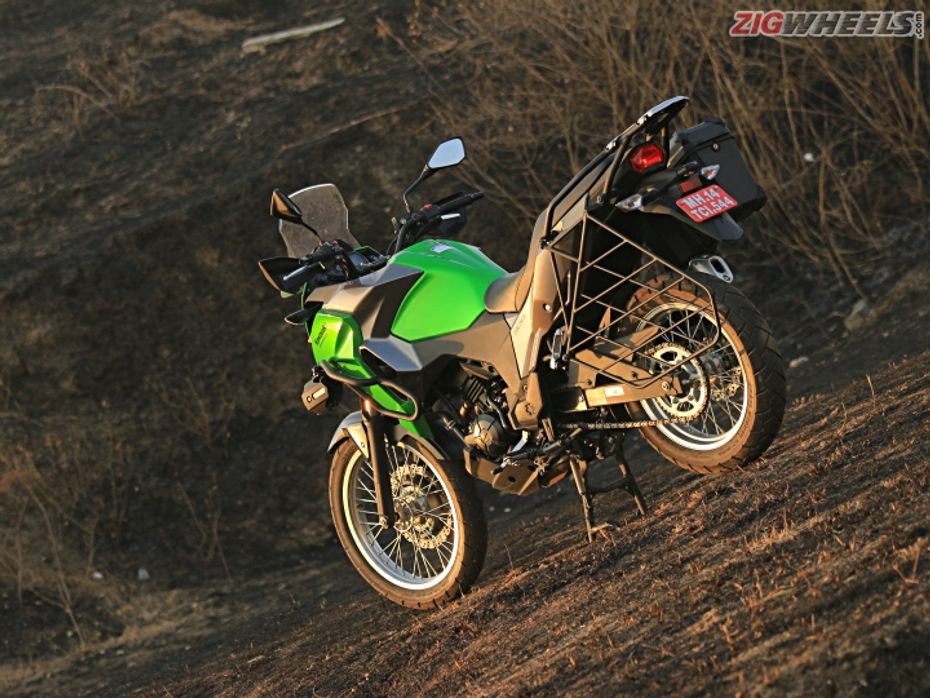
Parts quality and fit/finish are top notch and everything on the bike feels built to last and capable of taking on abuse. That said, the semi-digital instrument cluster feels a bit basic and dated.
But given the fact that it’s an ADV, more than how it looks, it matters how it fulfills two major jobs - touring and off-road.

Hit the road:
One of the major factors in choosing a touring bike is its ability to hold luggage, preferably without sacrificing pillion seat space, and the ability to secure it. Now the Versys X comes with a small luggage plate at the back mounted on four bars running along the rear seat. The luggage plate gets hooks which should certainly make it easy to secure a tail bag, though we would have preferred a wider carrier. And the mounting bars themselves should also allow you to hook up some more luggage on the rear seat. The wraparound crash bar at the front also makes it easy to secure a non-magnetic tank bag. And with the 17-litre pannier, you have a safe space to lock in your valuables.
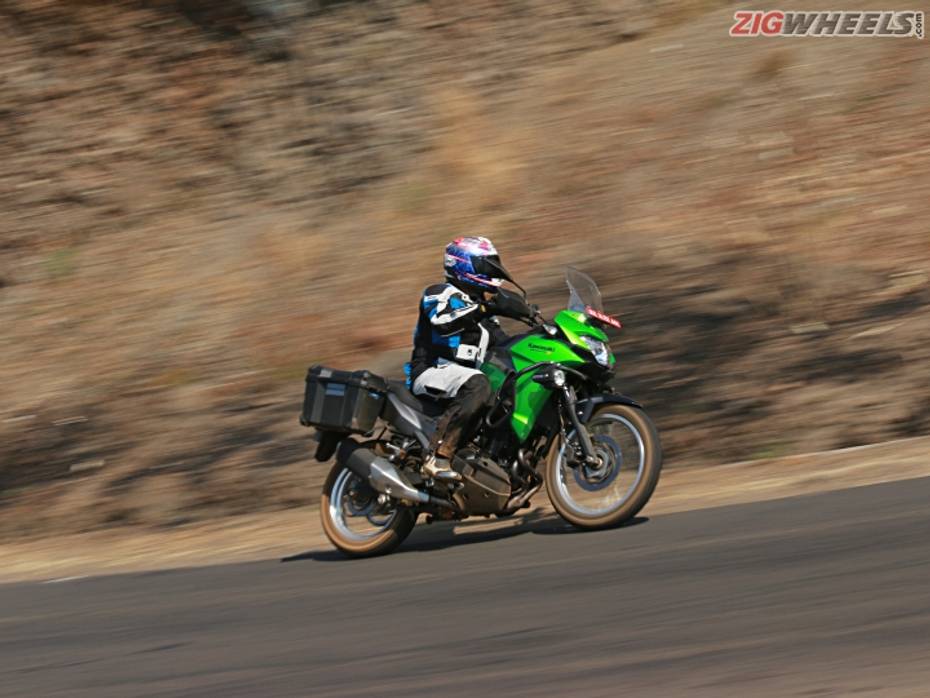
Next up is comfort. The seating position is upright thanks to high-set handlebars, with footpegs which are slightly rear-set and not too high, so your knees are not bent much. Despite the taller seat height, the reach to the ground is not an issue because the seat narrows towards the tank. The pillion seat is long and wide and will not have your pillion grumbling between long stints in the saddle. The tall windscreen offers good wind protection provided you crouch a bit. For my 5 foot 10 inch frame, I felt a bit of wind buffeting on the top of my helmet at speeds above 120kmph.
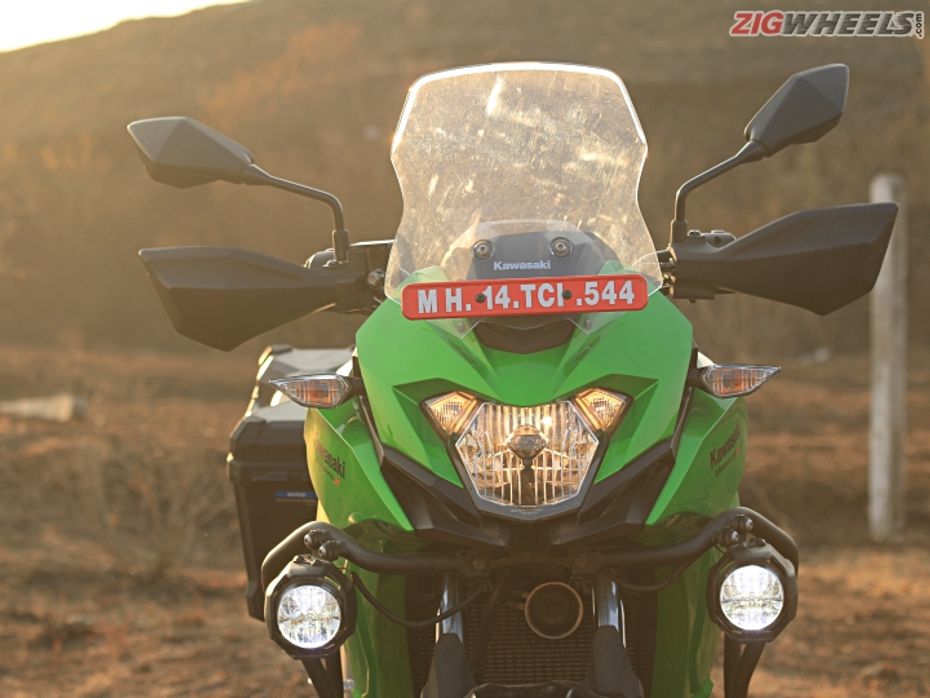
The 296cc liquid-cooled parallel twin motor comes from the Ninja 300. Now, given that the motor will be doing duty in an ADV, where bottom end grunt is paramount, and more torque is preferred over horsepower, it is strange that this motor has been tuned the other way round.
It makes 40PS at 11,500rpm (the Ninja 300 puts out 39PS at 11,000rpm). Torque is down - it makes 25.7Nm at 10,000rpm (the Ninja 300 makes 27Nm at 10,000rpm). That can't be good, right?
On paper, it’s not, but Kawasaki has done two things to offset that torque deficit. One, they have changed the airbox and revised the intake ports for better airflow. The exhaust unit is revised as well. These changes allow for a slightly stronger midrange and a more linear torque curve throughout the rev range.
Two, the Versys X gets a larger rear sprocket which gives it better initial acceleration. This also somewhat offsets the extra 12-kilo weight gain over the Ninja 300.
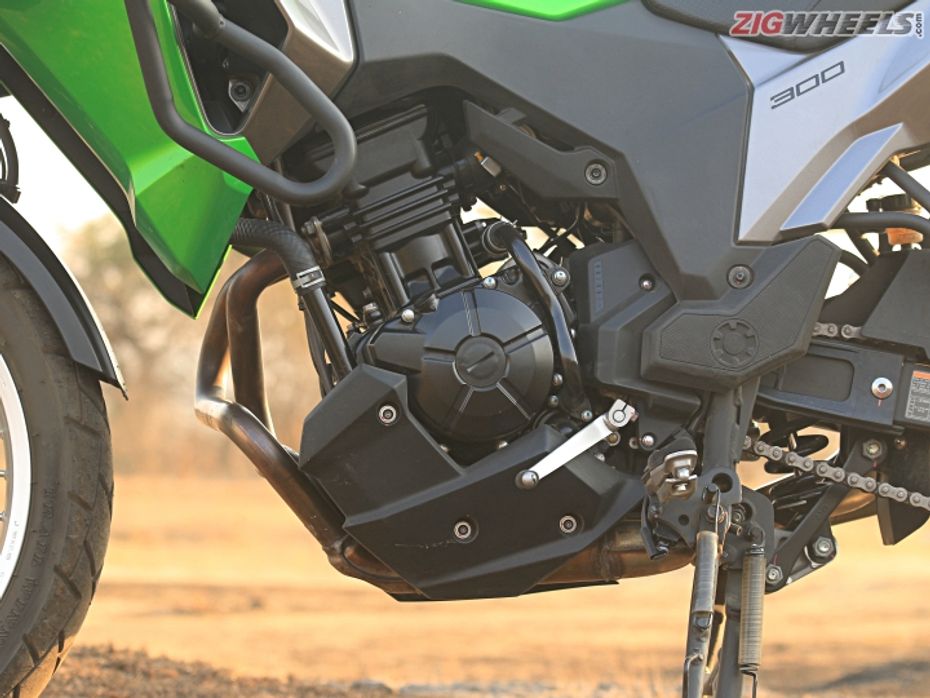
At 184kg (kerb), the Versys X is lighter than the Royal Enfield Himalayan (191kg kerb). So acceleration is quite nippy. Our acceleration tests saw the Versys X touch 60kmph from standstill in 3.41 seconds, almost as quick as the Ninja 300 (3.36 seconds). The run to 100kmph in 8.3 seconds saw the gap widen to 1 second. Where the improvements in mid range and shorter gearing show is in in-gear acceleration. The Versys X accelerated from 30 to 70kmph in third gear in 3.89 seconds. 40 to 80kmph in fourth was done in 4.96 seconds. Both numbers are a shade quicker than the Ninja 300. You do wish for a torquier motor though as you do have to work it a bit to extract more performance.
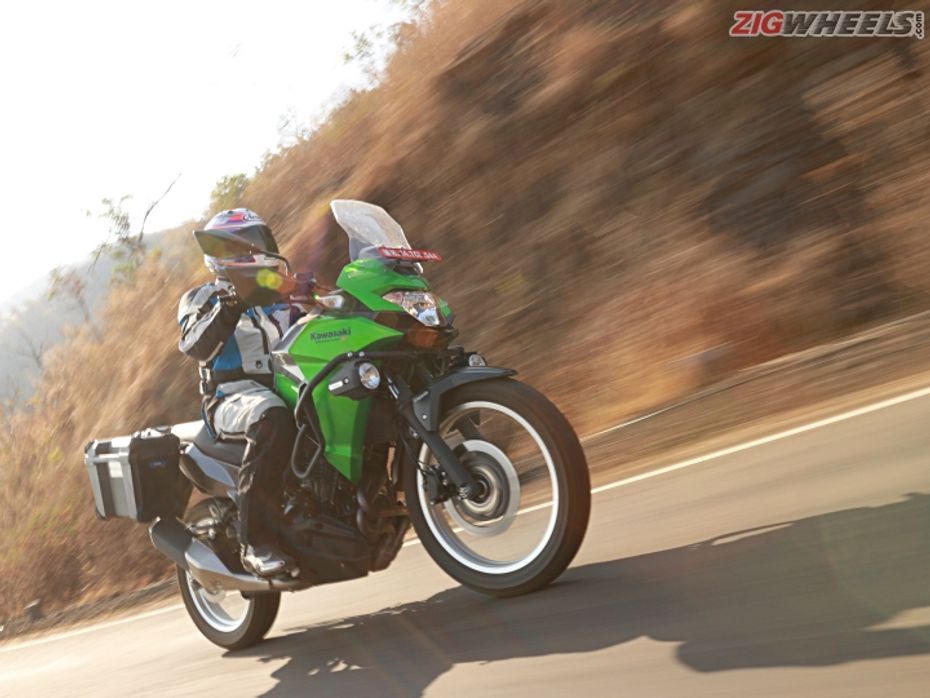
Fuel efficiency on the highway is 27.57kmpl, while in city conditions it returned 29.86kmpl. With the larger 17-litre fuel tank, it should give a theoretical range of around 470 kilometres on the highway.
While the engine is refined, it runs at a relatively high 7000rpm at 100kmph in sixth gear. At these speeds, there is a slight buzz in the seat and footpegs, which can get tiring after a while. Given that it is supposed to be relaxed at touring speeds, this is a big gripe.
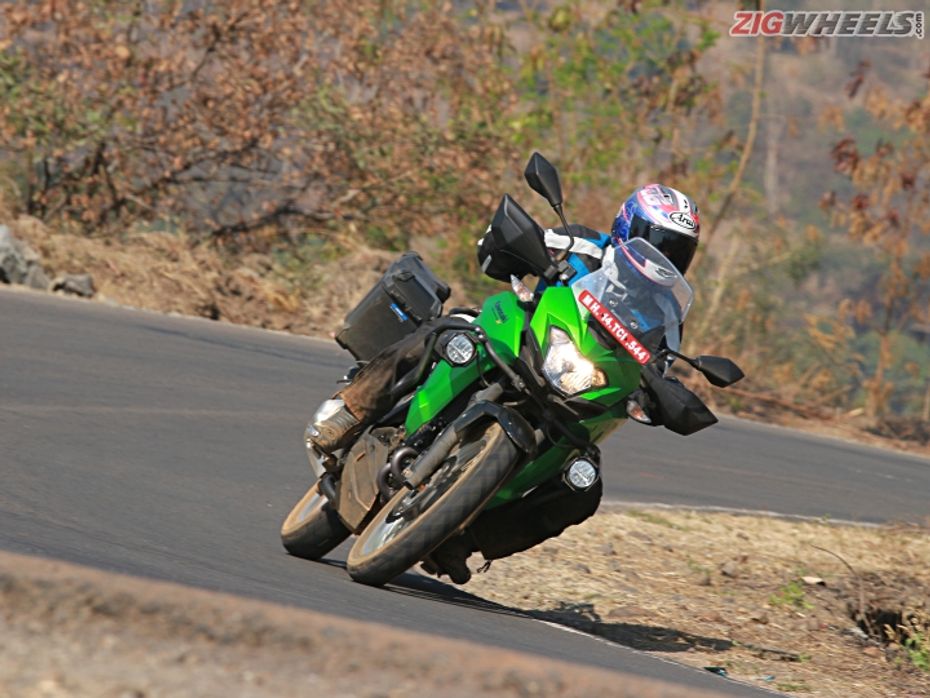
But even though it has clear off-road intentions, the Versys X surprised us with its nimble handling. It tackles the twisties with surefootedness and plenty of grip from the IRC tyres. The front offers good feedback and is willing to dart into corners like the Ninja 300. It is only when you push too hard that you feel the long-travel front wanting to run wide.
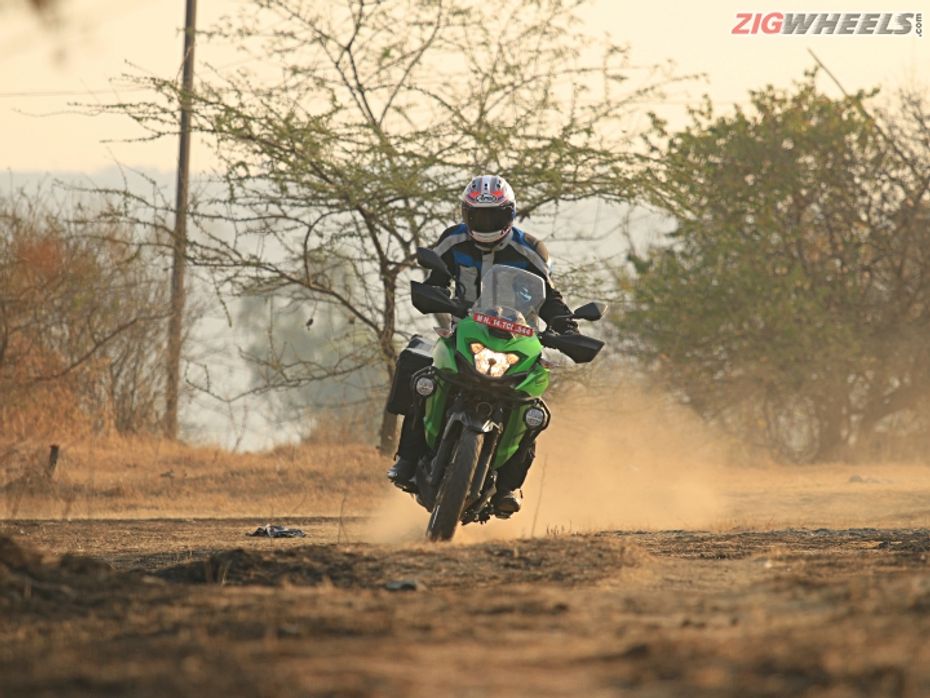
Get off the road:
Off the road, the motor impresses with its flexibility and linear power delivery. If you need to climb up a hill, there’s enough in reserve provided you are ham fisted with the throttle. It pulls cleanly from idle. Despite max power and torque delivered at a higher rpm, there is enough poke low down to power through soft mud and ditches.
The footpeg to handlebar position feels comfortable enough to allow you to stand up and grip the fuel tank with your knees while off-roading. Reach to the bar is wide so leverage is quite good, as is the turning radius. And it is short enough to execute U-turns in the narrowest of trails, which is a boon in city as well.
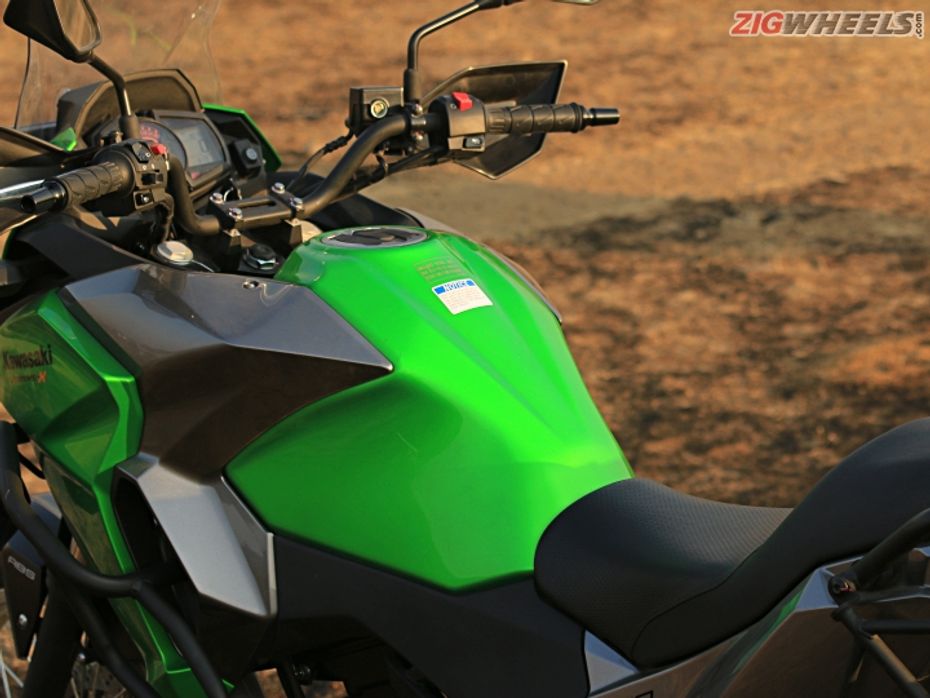
The tubular diamond-type frame gets new longer-travel suspension. The front has fatter 41mm telescopic forks with 130mm travel. At the back is a gas-charged bottom-linked monoshock with adjustable preload and 148mm of suspension travel. Its wheelbase, at 1450mm, is 45mm longer than the Ninja 300, while its rake, at 24.4 degree, is sharper than the Ninja as well. So while the longer wheelbase imparts stability, the sharper rake means quicker steering.
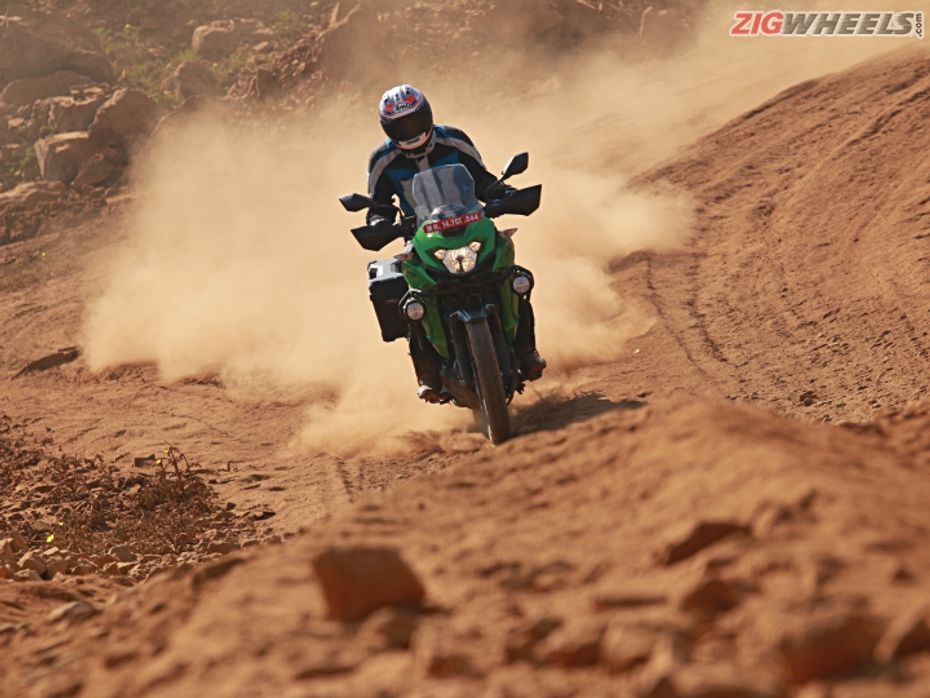
Off the road, the Ninja 300 is a hoot to ride given its lightweight chassis, eager motor and 19-inch front and 17-inch rear IRC Road Winner tyres that despite being road-biased gripped on loose surfaces surprisingly well. The long-travel suspension soaks up quite a bit of off-road undulations, with the front end feeling stable and allowing you to go push your limits with confidence. The brakes too feel at home off the road. Its single 290mm front disc and 220mm rear disc have a progressive bite and aided by the ABS, bring the bike to a standstill without drama. However, you do not have an option to disable ABS, which might just annoy the experienced off-road rider.
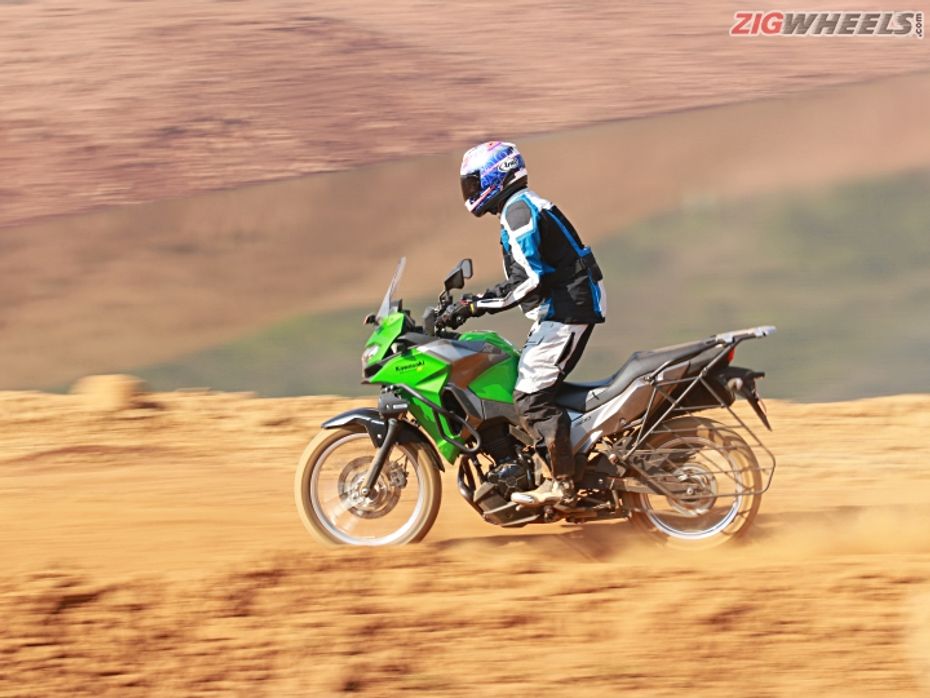
While the brakes performed admirably off the road, on the road however braking feels lacking and it shows in the braking runs. Under test, the ADV comes to a stop from 100kmph in 5.13 seconds, covering a distance of 66.65 metres. To put that into perspective, the Ninja 300 covers the same distance in 60.08 metres. The brake lever too requires some effort and feels spongy under hard braking, leaving you guessing as to how much pressure is needed.
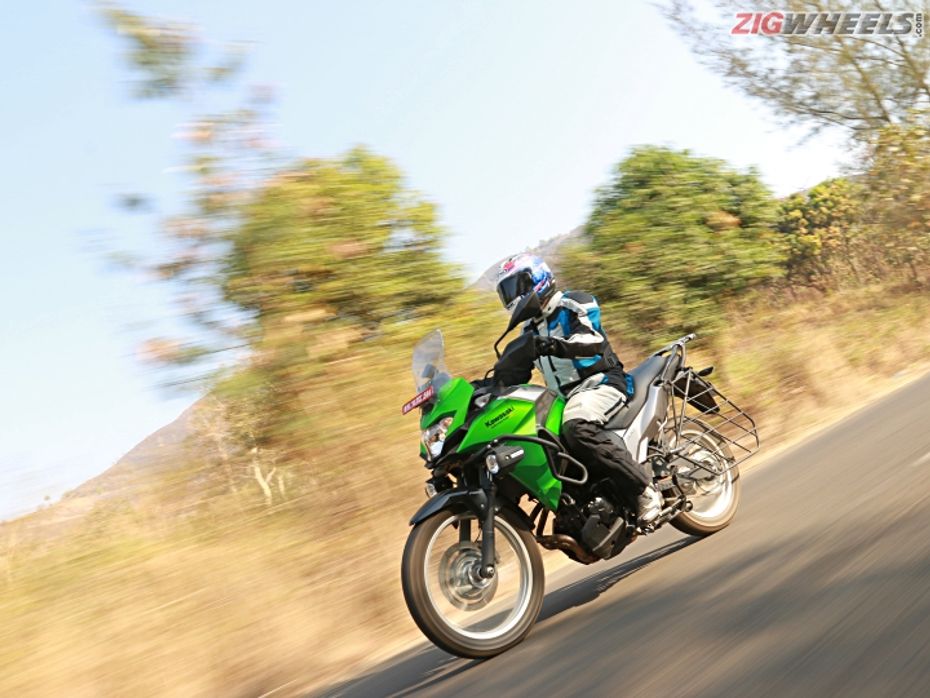
City slicker:
It might seem strange but ADVs make a lot of sense in the city. The upright riding position, short turning radius and low-end grunt make it ideal for the urban jungle. The only downsides with big ADVs are the weight and high seat height, an ignominy the Versys X seems to do away with. So you have a lightweight ADV you can flick around in traffic and not bother about potholes and speed breakers. It's just like the Himalayan but with more power and refinement, and importantly, less weight.
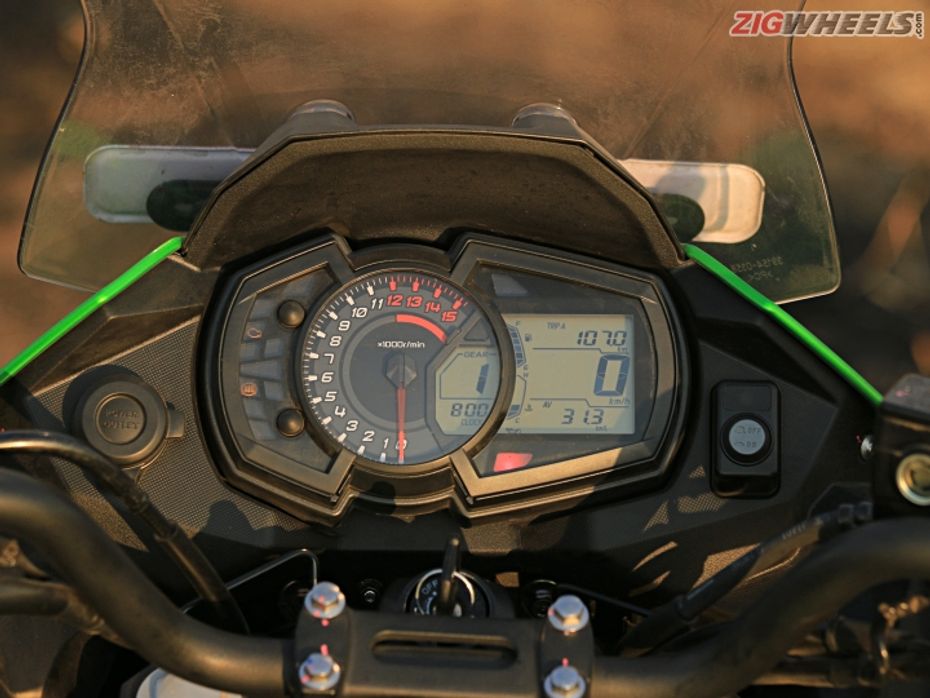
The best part is, the Kawasaki does not let the rider feel the engine heat even 45 minutes into stop-and-go traffic. The light controls like the accelerator and clutch lever makes sure you don't get tired easily. Midrange performance is quite good at low speeds and the bike pulls cleanly in lower gears. In fact, thanks to the gearing you can potter around in speeds as low as 20kmph in 4th gear. Overall, the Versys X is as hassle-free in the city as a 160cc bike and makes for a fantastic commuter.
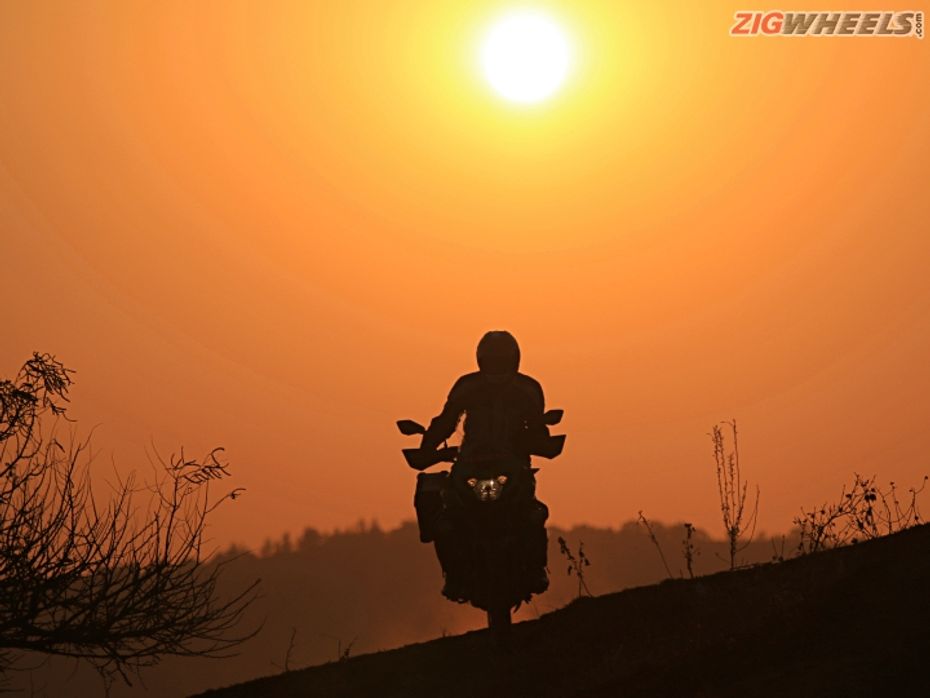
Yay or Nay?
Now to address the elephant in the room. Is the Versys X overpriced? Yes. Is the Versys X good value? Also yes. This might seem as a contradiction but look at it this way: If you are in the market for a fuss-free midsize ADV there is no other option that sits between the Royal Enfield Himalayan and Kawasaki Versys 650. The Himalayan makes for a good ADV but feels barebones and misses out on grunt. On the other hand, the Versys 650 is a fantastic tourer but has limited off-road capability and can feel heavy if you are not used to big adventure bikes.
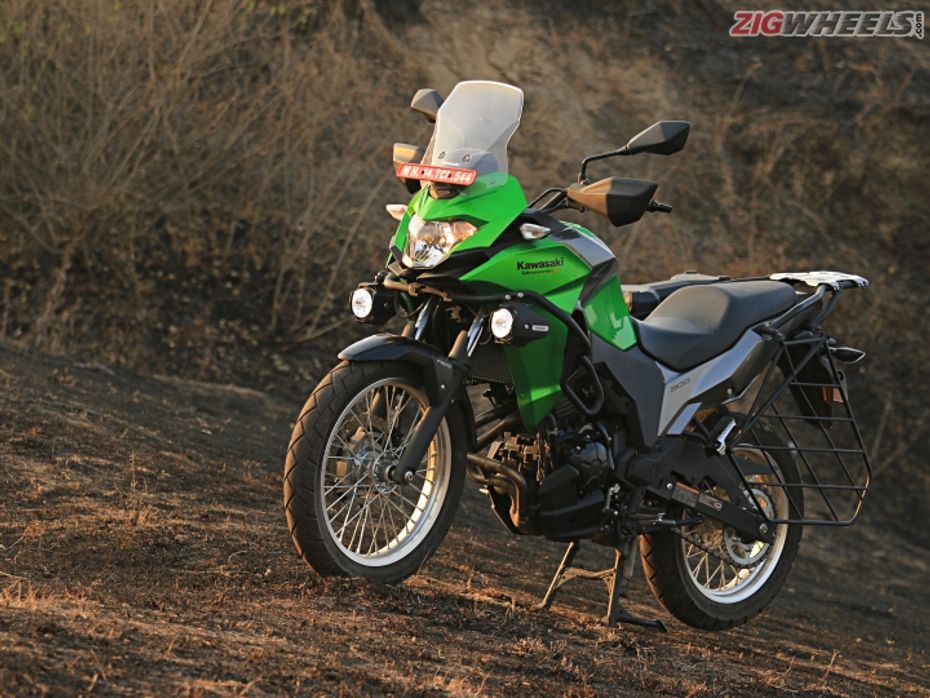
In this context, the Versys X 300 offers good value. It is effortless in the city and fun off-road. To top things off, it impresses in terms of quality, refinement, comfort and overall ability too. It falls a bit short on effortless highway touring but shines everywhere else. When it comes to a sub-5 lakh rupee ADV, unless the Suzuki VStrom 250, KTM 390 Adventure and BMW G310GS comes along, the Kawasaki Versys X is where the buck stops.
Words by Benjamin Gracias
Photography by Vikrant Date

Royal Enfield Himalayan Fi - Road Test Review

Kawasaki Versys 650: Review

2017 Kawasaki Ninja 300 Road Test Review

2017 Kawasaki Z650: Road Test Review

Royal Enfield Classic 350: 14,000km Long-Term Review

Royal Enfield Track School Experience: A Reality Check!

Royal Enfield Continental GT 650 5500km Long-Term Review: A Difficult...

2023 JK Tyre NRC Round 2: A Thrilling & Fitting Example Of Racing At...

2023 Royal Enfield Continental GT 650 Review: Sweet Shot Of Torque

Royal Enfield Continental GT 650 10,000km Long-term Review: 2 Likes...
 Mahindra BE 6
Mahindra BE 6
 Royal Enfield Classic 350
Royal Enfield Classic 350
 Maruti Dzire
Maruti Dzire
 Royal Enfield Continental GT 650
Royal Enfield Continental GT 650
 Honda Amaze
Honda Amaze
India's largest automotive community
 Maruti Brezza
Rs. 8.34 Lakh
Maruti Brezza
Rs. 8.34 Lakh
 Maruti FRONX
Rs. 7.51 Lakh
Maruti FRONX
Rs. 7.51 Lakh
 Tata Curvv
Rs. 9.99 Lakh
Tata Curvv
Rs. 9.99 Lakh
 Maruti Grand Vitara
Rs. 10.99 Lakh
Maruti Grand Vitara
Rs. 10.99 Lakh
 Mahindra Bolero
Rs. 9.79 Lakh
Mahindra Bolero
Rs. 9.79 Lakh